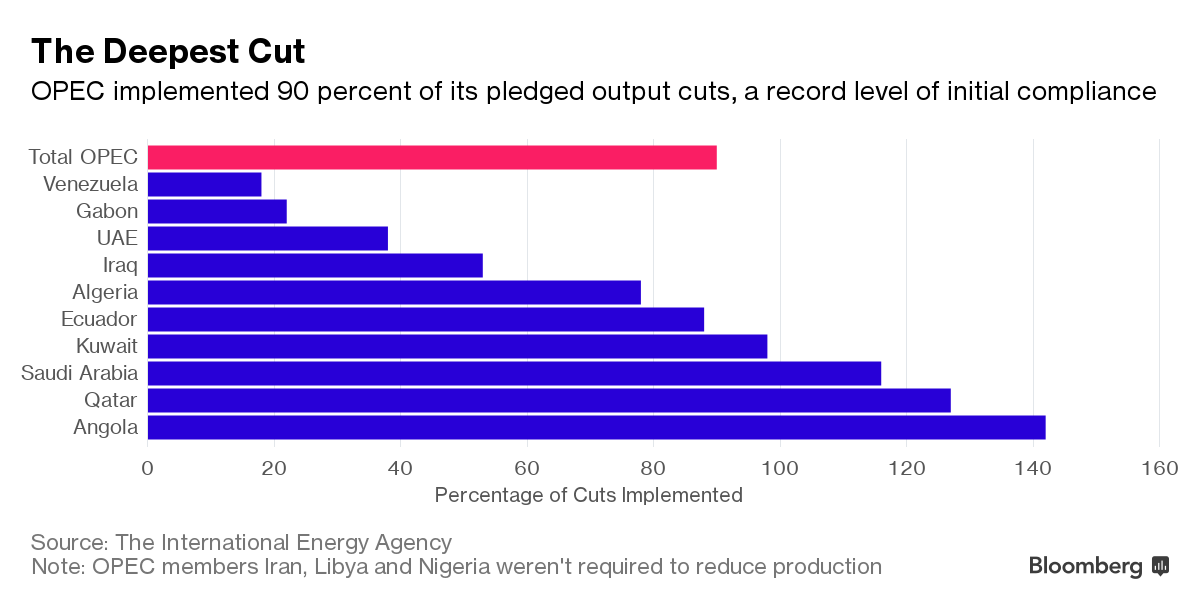
As hedge funds and money managers place record trades on a rally in oil, the price itself has fallen asleep. Logic dictates that something should give. Here are five charts examining the unprecedented speculative build-up and what the market’s next turn might be.
1. Frenzied betting…
At the start of February, speculators were betting a net 865 million barrels of oil across the market’s two global benchmarks that prices would rise. As well as being a record, their bullish positioning expanded by 78 percent since just before the Organization of Petroleum Exporting Countries and 11 other producer nations pledged to cut global crude supplies. Benchmark prices rose about 20 percent over the same period.
2. …sleeping market
Unfortunately for the bulls, the oil market itself has fallen asleep after an initial surge. As Standard Chartered analysts including Paul Horsnell pointed out this week, prices have been stuck around a dollar a barrel above or below $55.50 since mid-December. Meanwhile U.S. crude closed above $54 a barrel only once since OPEC’s Nov. 30 meeting, despite crossing that price level 14 times. “If crude prices are to break out of their recent range in the next few weeks, the risk is to the downside,” JBC Energy GmbH in Vienna said Thursday.
3. Spreads still show glut
The shortest-term oil prices show that an oversupply endures. The nearest Brent and West Texas Intermediate contracts remain in a structure known as contango, which typically occurs when there is too much supply, depressing short-term prices. While the market remains in contango, it is costly for traders to hold on to oil contracts from one month to the next, diminishing the profits of those speculatively betting on rallies. JBC sees no global reduction so far in inventories, although it’s still just six weeks since OPEC and its allies started to implement their cuts.
4. Rampant U.S. stockpile builds
OPEC’s main menace has made a comeback since the producer club made its cuts. U.S. crude inventories rose to the highest level since the Energy Information Administration started compiling weekly data, according to statistics released on Wednesday.
5. A cut above?
It’s not all doom and gloom. OPEC compliance with cuts — somewhere around the 90 percent mark — was at a record last month. Michael Hinds, an analyst at Goldman Sachs Group Inc., is among observers who say the oil market could soon start pricing in scarcer supply. The market could be in backwardation by mid-2017, he wrote in an e-mailed report this week.
Recommended for you

